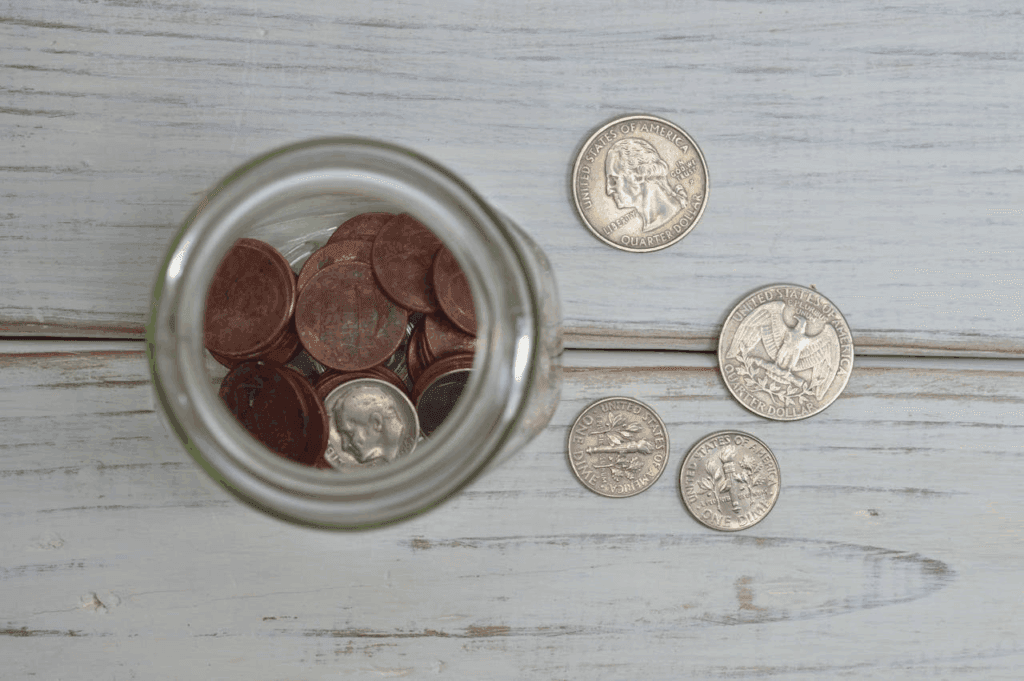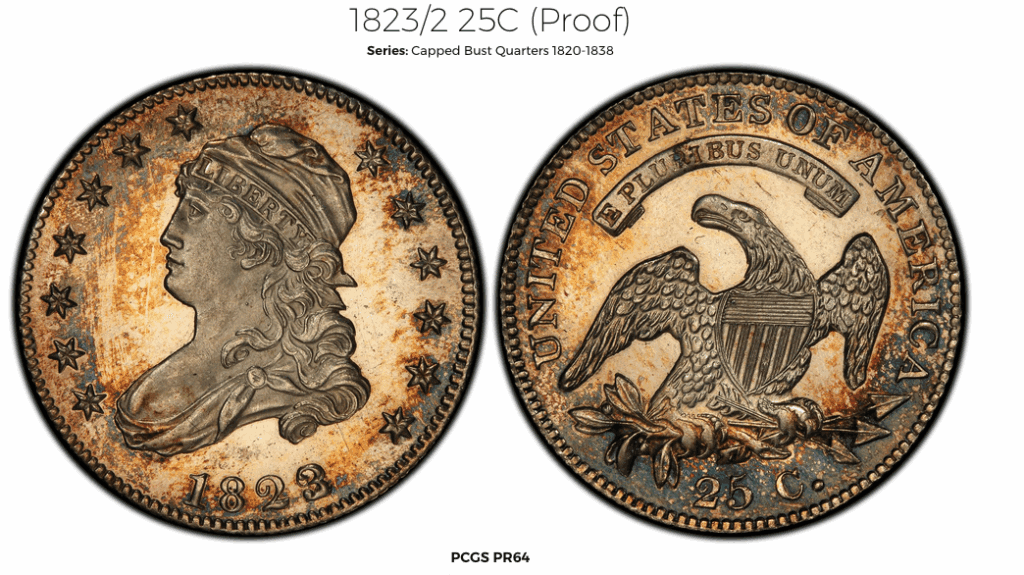
Quarters are part of everyday life—but some are worth far more than 25 cents. Thanks to rare minting errors, limited releases, and historical significance, certain quarters can fetch hundreds or even thousands of dollars.
From the early Draped Bust design to modern State and America the Beautiful series, the U.S. quarter has evolved into more than just currency—it’s a collector’s item. Today, coin enthusiasts and casual collectors alike are discovering valuable finds in everyday pocket change.
What Makes a Quarter Valuable?
Not all quarters are created equal. While most are worth their face value, certain factors can turn an ordinary 25-cent coin into a prized collectible. Here are the key elements that determine a quarter’s value:
1. Rarity
The fewer quarters that were minted in a specific year and location, the more valuable they tend to be. Coins from low mintage years (like the 1932-D and 1932-S Washington quarters) are especially sought after.
2. Mint Mark
The mint mark indicates where a coin was produced—such as “D” for Denver, “S” for San Francisco, and no mark for Philadelphia. Some mint marks, particularly those tied to rare years or errors, can significantly raise a coin’s value.
3. Condition (Grade)
A coin’s grade refers to its physical condition, from heavily worn to mint-state perfection. Higher-grade coins, especially those graded by professional services like PCGS or NGC, can be worth many times more than lower-grade examples.
4. Errors and Variations
Minting errors—such as double dies, off-center strikes, or extra leaf varieties—often create collectible demand. These accidental quirks make coins one-of-a-kind, and collectors pay a premium for them.
5. Historical and Collector Demand
Some coins carry added value simply because they’re tied to a significant historical moment or belong to a popular series. For example, the 50 State Quarters program spiked interest in certain designs and editions.
6. Metal Composition
Quarters minted before 1965 are 90% silver, which gives them intrinsic value based on the price of silver. Even circulated examples from this era are often worth several dollars just for their melt value.
Top 15 Most Valuable Quarters
While most quarters are worth just 25 cents, a rare few have sold for thousands—or even over a million—at auction. These high-value coins stand out due to their rarity, minting errors, historical significance, or exceptional condition.
Below is a carefully researched list of the top 15 most valuable quarters in U.S. history, including key details like year, mint mark, grade, and actual sale price.
Disclaimer: The values listed reflect confirmed historical auction results for coins in top condition—typically mint state (MS65 or higher), proof, or certified by grading services such as PCGS or NGC. Coins in lower grades or circulated condition are generally worth significantly less. Always consult a reputable appraiser or dealer before buying or selling valuable coins.
1. 1796 Draped Bust Quarter

The 1796 Draped Bust Quarter is the very first quarter ever minted by the United States, making it a foundational piece of American numismatic history. With only 6,146 coins struck, it’s one of the rarest early U.S. coins in existence. Its classical Liberty design and historical significance make it highly prized among collectors.
Fun fact: This was the only year the Draped Bust quarter featured 15 stars on the obverse, representing the number of states at the time.
- Year: 1796
- Series: Draped Bust
- Mint Mark: None (Philadelphia)
- Grade: MS67+
- Price: $1,527,500
2. 1823/2 Capped Bust Quarter

This quarter features a fascinating overdate error—1823 struck over a 2, creating the 1823/2 variety. Fewer than 10 specimens are known to exist today, making it one of the rarest U.S. quarters. Most surviving examples are in lower grades, so high-grade coins are especially valuable.
Fun fact: The 1823/2 quarter was unknown to collectors until the 20th century, adding to its mystique.
- Year: 1823
- Series: Capped Bust
- Mint Mark: None (Philadelphia)
- Grade: MS66
- Price: $396,562.50
3. 1870-CC Seated Liberty Quarter

Minted in Carson City, Nevada, the 1870-CC Seated Liberty Quarter had a mintage of just 8,340. Most were heavily circulated in the American West and very few survive in high grade. Its combination of rarity, condition, and “CC” mint mark make it a key coin for serious collectors.
Fun fact: The Carson City Mint operated for less than 25 years, but coins with the “CC” mint mark are now among the most collected.
- Year: 1870
- Series: Seated Liberty
- Mint Mark: CC (Carson City)
- Grade: MS65
- Price: $188,000
4. 1871-CC Seated Liberty Quarter

Another rare Carson City issue, the 1871-CC Seated Liberty Quarter had a slightly higher mintage than the 1870 version, but far fewer high-grade examples exist. This coin is exceptionally hard to find in mint state and highly coveted among Seated Liberty specialists.
Fun fact: Fewer than five uncirculated examples of this coin are believed to exist today.
- Year: 1871
- Series: Seated Liberty
- Mint Mark: CC (Carson City)
- Grade: MS65
- Price: $456,000
5. 1916 Standing Liberty Quarter

The debut year of the Standing Liberty design had a very limited production—just 52,000 coins. Its short run, beautiful Art Nouveau-inspired design, and public controversy over Liberty’s exposed breast make this one of the most iconic 20th-century quarters.
Fun fact: Public backlash over Liberty’s “bare chest” led to a redesign in 1917, making the original version highly collectible.
- Year: 1916
- Series: Standing Liberty
- Mint Mark: None (Philadelphia)
- Grade: MS67+
- Price: $188,000
6. 1932-D Washington Quarter

The 1932-D is one of the rarest and most sought-after Washington quarters, marking the debut year of the series. With a low mintage of just 436,800, this Denver-minted coin is a key date for any collector building a complete Washington quarter set.
Fun fact: Washington quarters were originally meant to be a one-year commemorative for George Washington’s 200th birthday—but they became the standard design for decades.
- Year: 1932
- Series: Washington
- Mint Mark: D (Denver)
- Grade: MS66
- Price: $74,400
7. 1932-S Washington Quarter

Just like its Denver counterpart, the 1932-S is another low-mintage key date. Only 408,000 were produced, and high-grade examples are extremely difficult to find. It’s a cornerstone of the Washington series and consistently commands strong prices at auction.
Fun fact: While the D and S mint marks look similar to beginners, experts look for sharpness and placement to confirm authenticity—fakes are common.
- Year: 1932
- Series: Washington
- Mint Mark: S (San Francisco)
- Grade: MS66
- Price: $45,500
8. 1950-D/S Washington Quarter (Overmintmark)

This quarter is an example of a rare minting anomaly: a “D” was struck over an “S” mint mark. These overmintmark varieties are prized by error collectors and bring premium prices when found in high grades.
Fun fact: Overmintmarks happened when dies were repurposed between mints—something no longer done today due to modern minting standards.
- Year: 1950
- Series: Washington
- Mint Mark: D over S
- Grade: MS67
- Price: $29,900
9. 1950 Proof Washington Quarter (Deep Cameo)

Proof coins are specially struck for collectors, and this 1950 quarter stands out for its deep cameo finish—where frosted details contrast against a mirror-like background. Very few proof quarters from this era survive in such pristine, deeply frosted condition.
Fun fact: The term “deep cameo” wasn’t widely used until decades later, but modern grading services now designate it officially.
- Year: 1950
- Series: Washington
- Mint Mark: None (Philadelphia)
- Grade: PR68DCAM
- Price: $31,200
10. 1955-D Washington Quarter

While 1955-D quarters are common in circulation, finding one in exceptional uncirculated condition is rare. The coin listed here achieved a top-grade MS67+, making it an outlier in terms of quality and therefore value.
Fun fact: In average circulated condition, this coin is worth only face value—but mint state versions can be worth thousands.
- Year: 1955
- Series: Washington
- Mint Mark: D (Denver)
- Grade: MS67+
- Price: $40,800
11. 2004-D Wisconsin State Quarter (Extra Leaf High)

This quarter gained fame for its dramatic mint error: an extra leaf on the corn stalk in the design. The “High Leaf” variety is scarcer than initially thought and quickly became one of the most valuable State Quarters released for circulation.
Fun fact: This error likely came from a damaged die or intentional modification, and it created a collecting frenzy when first discovered.
- Year: 2004
- Series: State Quarters
- Mint Mark: D (Denver)
- Grade: MS67
- Price: $2,530
12. 2004-D Wisconsin State Quarter (Extra Leaf Low)

A sibling to the “High Leaf” error, the “Low Leaf” version features the extra leaf positioned closer to the bottom of the corn stalk. It’s equally collectible and slightly more common than the High Leaf, but still brings significant value in top condition.
Fun fact: These error quarters were mostly found in the Midwest shortly after release, causing regional coin roll hunts to explode.
- Year: 2004
- Series: State Quarters
- Mint Mark: D (Denver)
- Grade: MS67
- Price: $2,220
13. 2000-P South Carolina State Quarter

This modern coin achieved its value not because of rarity, but because of condition. With an ultra-high grade of MS69—just one level below a perfect coin—this South Carolina State Quarter represents the extreme top end of modern coin collecting.
Fun fact: This is one of the highest-graded business strike quarters from the entire State Quarters series.
- Year: 2000
- Series: State Quarters
- Mint Mark: P (Philadelphia)
- Grade: MS69
- Price: $3,525
14. 2001-P New York State Quarter

Similar to the South Carolina coin, this New York State Quarter reached an MS69 grade—an exceedingly rare feat for any modern circulation coin. Its pristine surfaces and flawless strike helped it sell for far above face value.
Fun fact: Millions of New York quarters were minted, but only a tiny handful have survived in nearly perfect condition.
- Year: 2001
- Series: State Quarters
- Mint Mark: P (Philadelphia)
- Grade: MS69
- Price: $2,585
15. 2019-W Lowell National Park Quarter

In 2019, the U.S. Mint introduced a “W” mint mark for West Point to promote coin collecting. Only 2 million Lowell quarters were minted with this mark, making it significantly rarer than standard issues. This specific coin achieved a premium grade, boosting its value further.
Fun fact: This was the first ever quarter to carry the “W” mint mark—making it historic and highly collectible.
- Year: 2019
- Series: America the Beautiful
- Mint Mark: W (West Point)
- Grade: MS67
- Price: $2,500
Other Noteworthy Mentions
These modern quarters may not crack the top 15 but are still highly collectible due to limited mintages, special marks, or exceptional grades:
- 2019-W War in the Pacific Quarter – One of the first “W” mint mark releases, scarce in circulation.
- 2020-W Salt River Bay Quarter (V75 Privy Mark) – Commemorates the end of WWII; low mintage and high demand.
- 2020-W Tallgrass Prairie Quarter (V75 Privy Mark) – Features the rare V75 mark and strong collector interest.
- 2020-W Weir Farm Quarter (V75 Privy Mark) – Another limited 2020 release, valued in mint-state condition.
- 2020-W American Samoa Quarter (V75 Privy Mark) – Nicknamed the “Bat Quarter,” unique design and collectible status.
How to Identify Valuable and Rare Quarters
Spotting a valuable quarter doesn’t always require expert knowledge—but knowing what to look for can make all the difference. Whether you’re sifting through pocket change or inherited a jar of old coins, here are the key steps and features to help you identify quarters that might be worth far more than face value:
1. Check the Date
Older quarters, especially those minted before 1965, are more likely to have collectible or intrinsic value. For example:
- Pre-1965 quarters are made of 90% silver, giving them a melt value well above 25¢.
- Key dates like 1932-D or 1916 Standing Liberty are rare and in high demand.
2. Look for the Mint Mark
The mint mark tells you where the coin was produced:
- D = Denver
- S = San Francisco
- P or no mark = Philadelphia
- W = West Point (only used on modern limited releases)
Some quarters are more valuable specifically because of their mint mark. For example, a 1932-D is far rarer than a 1932-P.
3. Examine the Coin’s Condition
Condition plays a major role in value:
- Mint State (MS) coins are uncirculated and have no signs of wear.
- Proof coins are struck for collectors and have a mirror-like finish.
- Light wear can reduce a coin’s value significantly, even if it’s rare.
Use a magnifying glass to check for scratches, dings, or discoloration.
4. Weigh the Coin (Optional but Helpful)
- Silver quarters (pre-1965) weigh 6.25 grams
- Clad quarters (post-1965) weigh 5.67 grams
If a post-1965 coin weighs like a silver one, it could be an off-metal error—very rare and valuable.
5. Look for Errors or Unique Features
Mint errors, like doubled dies, off-center strikes, or extra design elements, can turn common coins into valuable ones. These features often require close inspection and are easiest to spot with a magnifier or microscope.
Most Common Errors Seen in Quarters
Minting errors are some of the most exciting and valuable discoveries in coin collecting. These unintentional mistakes during the production process can make a quarter significantly more valuable—especially when the error is dramatic or rare. Here’s a guide to the most common types of errors found in U.S. quarters:
1. Doubled Die (DDO/DDR)
A doubled die error happens when the coin’s design is imprinted twice at slightly different angles during the die creation process. This can cause numbers, letters, or other details to appear “doubled.”
- Look for: Doubling in the date, “LIBERTY,” or “IN GOD WE TRUST.”
- Famous example: 1934 and 1976-D Washington quarters with doubled dies.
2. Off-Center Strike
This occurs when the coin is not properly aligned during striking, resulting in a partial image or design that’s noticeably shifted to one side.
- Look for: A visibly lopsided coin, with part of the design missing.
- Value tip: The more off-center it is (especially over 50%) without losing the date, the more valuable it becomes.
3. Die Crack / Cud Error
Die cracks happen when the coin die begins to fracture, leaving raised lines or blobs on the coin’s surface. A cud is a specific type of die break at the edge that results in a raised, unstruck area.
- Look for: Raised lines, blobs, or unusual shapes near the rim or fields of the coin.
- Fun fact: Each die crack is unique, making your coin one of a kind.
4. Repunched Mint Mark (RPM)
A repunched mint mark happens when the mint mark is punched more than once in slightly different locations. These were more common in older coins before mint marks were added directly to the master die.
- Look for: Doubling or shadowing of mint marks like “D” or “S.”
- Seen on: 1950s–1970s Washington quarters.
5. Missing Clad Layer
Modern quarters have a copper-nickel clad surface. If one layer is missing, the coin appears duller or has a bronze-like tone.
- Look for: A two-tone edge or a coppery appearance on one side.
- Note: These are often light in weight compared to normal quarters.
How to Spot Modern Quarters Worth Keeping
Most modern quarters are mass-produced and worth face value—but a few slip through with rare features, limited mintages, or unique errors that make them highly collectible. Knowing what to look for can help you pick valuable coins out of everyday change. Here’s how to spot modern quarters that might be worth keeping:
1. Look for the “W” Mint Mark (2019–2020 Only)
In 2019 and 2020, the U.S. Mint released special quarters with a “W” mint mark for West Point—only 2 million of each design were made, compared to hundreds of millions from other mints.
- Keepers: 2019 and 2020 America the Beautiful quarters with a “W”
2. Check for State Quarter Errors (1999–2008)
Some state quarters contain mint errors like extra design elements or missing details.
- Famous example: 2004-D Wisconsin Quarter with an Extra Leaf High or Low
- What to look for: Extra lines, doubled images, or odd features on the design
3. High-Grade Coins
Most modern quarters show signs of wear quickly. If you find one in pristine condition (MS66 or higher)—with no scratches, strong luster, and a crisp strike—it may be worth holding onto or submitting for grading.
- Tip: Look for rolls or uncirculated sets to find higher-grade coins
4. Odd Colors or Weight
A coin that looks coppery, lighter/darker than usual, or thinner might have a minting issue—such as a missing clad layer or being struck on the wrong planchet.
- What to do: Weigh it with a digital scale or compare it to a regular quarter
5. Doubled Dies or Misalignments
Even modern coins can have doubling in the lettering or off-center strikes. These can increase value significantly if confirmed.
- Where to look: Dates, “LIBERTY,” “IN GOD WE TRUST,” or the design itself
6. Proof or Satin Finish in Circulation
Occasionally, proof or special finish coins intended for collectors slip into circulation. These will look shinier, more detailed, or have a matte/satin texture.
- Keepers: Any unusual-looking coin that differs clearly from standard pocket change
Spotting valuable modern quarters takes a bit of patience and a sharp eye, but they’re still out there. If you’re not sure, it’s always worth setting the coin aside and comparing it to online guides or having it evaluated by a professional.
Where and How to Sell Valuable Quarters
If you’ve found a quarter that might be worth more than face value, the next step is turning that discovery into actual money. But selling coins isn’t as simple as dropping them off at the bank—you need to know where to sell, how to get the best price, and what to avoid. Here’s everything you need to know.
1. Get an Accurate Value First
Before selling, it’s crucial to know what your coin is really worth.
- Check online price guides: Use sites like PCGS Price Guide or NGC Coin Explorer for general value ranges.
- Compare sold listings: Look at eBay’s “sold” listings to see what similar coins actually sold for.
- Consider professional grading: If your coin looks uncirculated or has an error, submit it to a grading service like PCGS or NGC to maximize resale value.
2. Best Places to Sell Valuable Quarters
Here are your top options depending on the type of coin and your goals:
a. Online Marketplaces
- eBay – Great for reaching collectors, especially if the coin is certified or high-grade.
- Etsy or Facebook Marketplace – Better for casual buyers but less reliable for serious collectors.
- Pros: Large audience, set your own price
- Cons: Seller fees, need strong listing photos, buyer negotiations
b. Auction Houses
- Heritage Auctions, Stack’s Bowers, and similar firms handle high-value or rare coins.
- Best for: Coins worth $500+ or with historical significance.
- Pros: Professional buyers, trusted reputation
- Cons: Commission fees, slower sale process
c. Coin Shops & Local Dealers
- In-person coin shops can make fast offers, especially for silver quarters or known rarities.
- Pros: Quick payment, personal service
- Cons: May offer lower than retail value
d. Coin Shows & Collector Events
- These are great places to network with serious collectors and dealers.
- Bring graded coins or error coins for evaluation on-site.
3. Tips to Maximize What You Get
- Don’t clean your coin – Cleaning can destroy collector value. Always leave the patina intact.
- Take clear photos – Good lighting and close-ups of the date, mint mark, and condition help your listing stand out.
- Highlight any certification – If your coin is graded by PCGS/NGC, mention the grade and include a photo of the holder.
Tools and Resources for Coin Collectors
Whether you’re a beginner starting to check your pocket change or a seasoned numismatist building a high-end collection, having the right tools and resources can make coin collecting more efficient, accurate, and enjoyable. Below are essential apps, websites, and supplies every collector should know about.
1. Online Price Guides & Databases
These websites are trusted by collectors and dealers alike for accurate coin values and detailed coin specs:
- PCGS Price Guide – Up-to-date market prices and grading scale references.
- NGC Coin Explorer – Comprehensive database with images, values, and census data.
- Numista – Community-driven database, especially useful for foreign coins and lesser-known varieties.
- CoinFacts – In-depth details about U.S. coins, including varieties, population reports, and auction history.
2. Mobile Apps for Identification & Tracking
Smartphone apps are useful for quick coin lookups and managing your collection on the go:
- CoinSnap – AI-powered coin identifier using your phone’s camera.
- PCGS CoinFacts App – Research U.S. coins and verify graded slabs.
- NGC Registry App – Track your certified coins and view population reports.
- CoinManage (desktop) – Advanced inventory management for serious collectors.
3. Coin Grading & Authentication Services
If you suspect you have a valuable coin, having it professionally graded can increase its value and credibility when selling:
- PCGS (Professional Coin Grading Service) – One of the most respected grading services in the world.
- NGC (Numismatic Guaranty Company) – Equally trusted, with an extensive database and collector tools.
- ANACS – Known for error coin grading; often more affordable for beginners.
4. Essential Physical Tools
To evaluate your coins properly, these basic tools are worth having:
- Jeweler’s loupe (10x–30x magnification) – Essential for spotting fine details and errors.
- Digital scale (to 0.01g) – Useful for identifying off-metal strikes or missing clad layers.
- Soft cotton gloves – Prevents fingerprints and oils from damaging coins.
- Coin flips or 2×2 holders – For safe, non-damaging storage and labeling.
5. Online Communities & Forums
Joining collector communities helps you stay informed, ask questions, and connect with others:
- r/coins on Reddit – Friendly place to post finds, ask for values, and get ID help.
- Collectors Universe Forum (PCGS) – In-depth discussions with experienced numismatists.
- Coin Community Forum – Beginner-friendly and active across all coin types.
FAQs
How do I know if my quarter is rare?
A quarter might be rare if it meets one or more of these conditions:
- Low mintage: Coins from years like 1932-D or 1932-S had very limited production.
- Error or variety: Look for doubled dies, off-center strikes, or unusual features (like the 2004-D Wisconsin “Extra Leaf” quarter).
- High grade: Uncirculated or mint-state coins with little to no wear are worth more.
- Unique design or marking: Coins with unusual mint marks, like the 2019–2020 West Point “W” quarters, are rarer than standard issues.
Are any 2020+ quarters worth money?
Yes—several modern quarters from 2020 and beyond can be valuable, especially in uncirculated condition or if they have unique features. Examples include:
- 2020-W quarters with the “V75” privy mark (issued to mark the 75th anniversary of WWII).
- High-grade or error coins from new series like the American Women Quarters (2022–2025).
- Mint sets and proof coins from these years can also be worth more than face value if kept in pristine condition.
Collectors are especially interested in coins with limited mintages or new varieties, so newer quarters can be worth holding onto.
Can I find valuable quarters in everyday change?
Absolutely! While rare, valuable quarters still turn up in pocket change, especially:
- Silver quarters minted before 1965 (they contain 90% silver).
- Error coins like doubled dies or off-center strikes.
- West Point “W” quarters (2019–2020) which were released into general circulation.
- High-grade coins that show little wear—if found early after minting.
Roll hunting (buying rolls of quarters from banks) increases your chances of finding hidden gems.
What’s the difference between proof, mint state, and circulated coins?
Here’s a simple breakdown:
- Proof: Special collector coins made with polished dies and planchets. They have mirror-like backgrounds and frosted details. Usually sold in sets and not intended for circulation.
- Mint State (MS): Uncirculated coins that were never used as money. They retain their original luster and show no signs of wear. Graded on a scale from MS60 to MS70.
- Circulated: Coins that have been used in everyday transactions. They show wear, scratches, and other signs of handling, which usually lowers their value.
Proof and mint-state coins are typically more valuable than circulated ones—especially when professionally graded.




